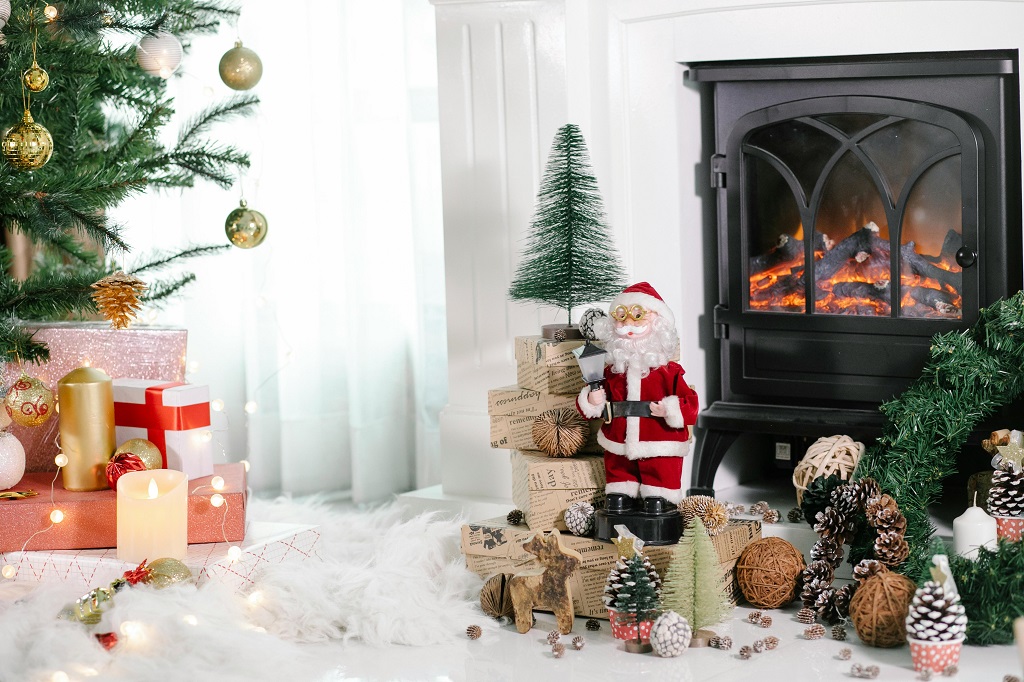-
- Utilize natural sunlight during the day to naturally warm your home and reduce heating system stress.
- Insulate your home properly, especially the attic, walls, and floors, to prevent heat loss and improve energy efficiency.
- Seal any gaps in door and window frames, and maintain your heating system regularly to enhance its performance.
- Dress warmly to conserve body heat, reducing the need for additional heating and thus lowering energy costs.
Winter can be a beautiful season with snow-covered landscapes, hot chocolate, and snuggles by the fire. However, for homeowners, the season brings the added stress of keeping their homes warm. Heating your home can come with a hefty price tag, but there are ways to lower the cost. This blog will share essential tips on how to efficiently heat your home during the cold winter months.
Use Natural Heat
During the day, the sun can bring in natural heat through your windows. Keep your shades, curtains, and blinds open to let the sunlight in. This will boost the temperature of your home and reduce the stress on your heating system. At night, close them to retain the warmth. You can also invest in thermal curtains or window coverings to better insulate your windows and keep the heat from escaping.
Insulate Your Home
Proper insulation is crucial for keeping your home warm during the winter. Your attic, walls, and floors are the main areas that need insulation. If your home is not adequately insulated, you could be losing a significant amount of heat through these areas. This will cause your heating system to work harder and drive up your energy bills. Make sure you choose the right insulation material as per your home’s needs and climate. Here are the four most common types of insulation:
Fiberglass
Fiberglass is a popular insulation material due to its affordability and effectiveness. It is made of fine glass fibers and comes in batts or rolls, making it easy to install. You can use it for your attic, walls, and floors.
Cellulose
Cellulose insulation is made from recycled paper products, making it an eco-friendly option. It can be blown into walls and attics to fill gaps and provide excellent thermal resistance.
Spray Foam
Spray foam insulation is a more expensive option but provides superior insulation and air sealing. It is sprayed onto walls or cavities, expands to fill any gaps, and creates an airtight seal.
Reflective Insulation
Reflective insulation works by reflecting heat back into your home. This type of insulation is ideal for areas with high temperatures and can be installed in attics or crawl spaces.
By ensuring your home is well-insulated, you can reduce heat loss and improve energy efficiency, ultimately lowering your heating costs.
Seal Doors, Windows, and Unused Vents

A lot of heat can escape through small cracks in your home’s structure. Check window and door frames for any gaps and seal them with weatherstripping or caulking. It’s also essential to check vents in unused rooms, as heat is wasted by heating rooms that don’t require it.
Maintain Your Heating System
Regular maintenance for your heating system is necessary to ensure it runs at optimal performance. Dirty filters and clogged ducts reduce efficiency and make your system work harder than it has to. Schedule a yearly tune-up with a professional and replace your filters regularly to maintain peak performance.
You should also keep your boiler clean and free of dust and debris, as this can affect its efficiency. Your boiler should be serviced every year to ensure it’s functioning correctly and operating safely. And if your boiler is over fifteen years old, it may be time to consider a more energy-efficient model.
Consider employing the help of boiler installation professionals who can assess your current system and recommend the best options for your home. They can also advise on the most cost-effective ways to heat your home and help you save on energy bills.
Dress Warmly

One of the easiest ways to reduce heating costs is by dressing warmly. Wear thick socks, sweaters, and blankets. It’s amazing how much body heat is retained when you layer appropriately. You can also invest in a cozy pair of slippers to keep your feet warm and reduce the need for extra heating.
Winter may bring challenges, but you can keep your home warm without breaking the bank with the right approach. You can significantly enhance your home’s heating efficiency by leveraging natural heat, insulating your home properly, sealing all possible leakage points, and maintaining your heating system.
Remember, every bit of heat conserved contributes to lower energy bills and a more comfortable home during the cold season. Lastly, don’t undervalue the power of adding an extra layer of clothing; staying cozy can help you resist the urge to crank up your heat. Here’s to a warm and energy-efficient winter!

